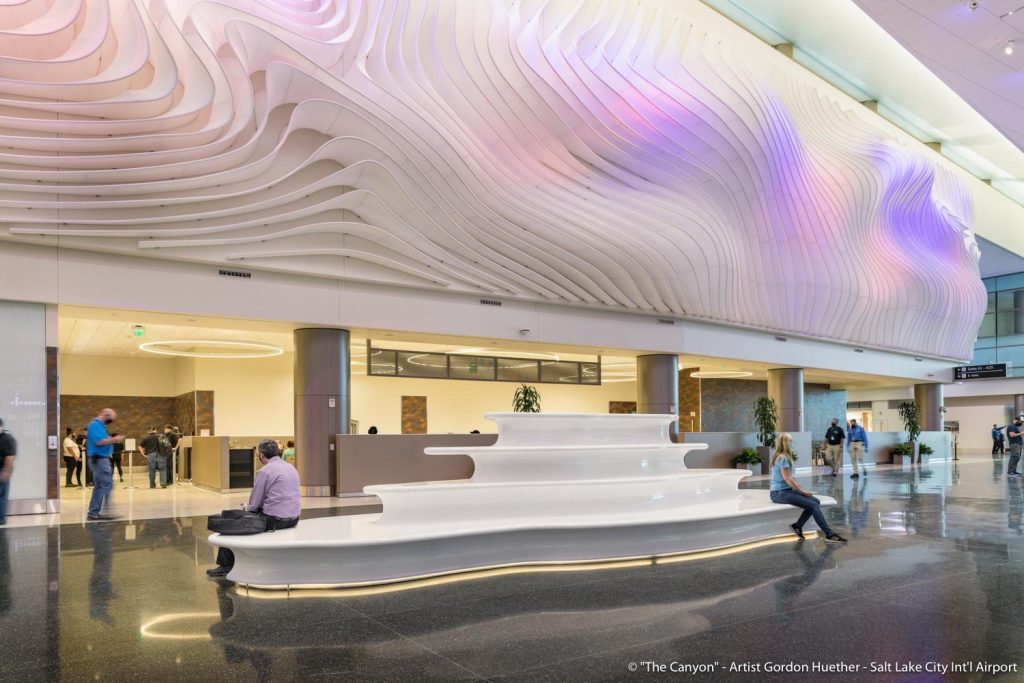Based in Napa, California, Gordon Huether has been creating large-scale art worldwide for more than 40 years, including seven major installations for the new US$4bn Salt Lake City International Airport terminal, which opened in 2020. “The art that I create is not about me; it’s about the people that experience it and the community or places where it’s located,” he says. Working for transit agencies, universities, real estate developers and private groups offers a great range of assignments. “Every project has a story and it’s my job to ferret out that story and tell it in a visually poetic way,” he adds. Here he shares his top tips for getting the most out of art investments.
1. Select the artist, not the art
A common practice among large organizations is to use a ‘beauty contest’ of several artists creating draft concepts, before choosing a near-final artwork. That system can work, of course, but you will achieve superior results if an artist is chosen first – similar to how airport architects are chosen before the design. That same process enables a better outcome for the artist, as he or she can go more deeply into the objectives, the sponsor’s ethos and directives, the impact on constituents and passengers, and the site constraints and opportunities.
2. Bring the artist in early
The bigger the project and its desired impact, the more time needed to create and execute it well. There’s no better way to consider all the potential, the objectives, the challenges and the eventual success than time to invest in planning and research, and to allow for changes or unforeseen obstacles. Multimillion-dollar investments in art can take years, although some projects with preset guidance can fast-track in several months.
Here’s a key tip: ask artists about their full capabilities. Ours is design-build, from concept to
final execution. Some artists don’t want to bother with process and hand it off completely to others or, worse yet, leave it to the owner to implement.
3. It’s all about mission and audience
Art in transit centers, museums, universities and public plazas is for everyone, not just the artist, so it is important to have clear objectives. For the new Salt Lake City International Airport, the mission from the start was to celebrate the natural beauty of Utah in a fully architecturally integrated art program, for which we created The Canyon, The Falls, The River Tunnel, The Column Plates and Benches, and more. These works help market the incredible scenery and parks of Utah to millions of passengers.
4. Think site-specifically
Successful large-scale art is integral to its site and surroundings. How will people experience the piece? What is the context, both physically as people come from various locations, but also subjectively in the purpose and expectations they bring to the experience? The light, surfaces, colors, textures and surroundings are also key.
5. Invest in teamwork
Large-scale art is a tremendous opportunity: art-dollars can perform extra duty if the artist, architect and project sponsor work together from early in the process. The big idea is to blur the lines between art and the architecture of the facility, but it requires a multidisciplinary approach to be successful.

